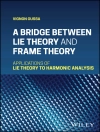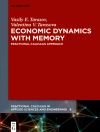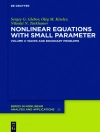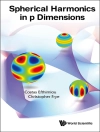The asymptotic distribution of eigenvalues of self-adjoint differential operators in the high-energy limit, or the semi-classical limit, is a classical subject going back to H. Weyl of more than a century ago.
In the last decades there has been a renewed interest in non-self-adjoint differential operators which have many subtle properties such as instability under small perturbations. Quite remarkably, when adding small random perturbations to such operators, the eigenvalues tend to distribute according to Weyl’s law (quite differently from the distribution for the unperturbed operators in analytic cases). A first result in this direction was obtained by M. Hager in her thesis of 2005. Since then, further general results have been obtained, which are the main subject of the present book.
Additional themes from the theory of non-self-adjoint operators are also treated. The methods are very much based on microlocal analysis and especially on pseudodifferential operators. The reader will find a broad field with plenty of open problems.
Содержание
- Introduction. - Part I Basic Notions, Differential Operators in One Dimension . - Spectrum and Pseudo-Spectrum. — Weyl Asymptotics and Random Perturbations in a One-Dimensional Semi-classical Case. - Quasi-Modes and Spectral Instability in One Dimension. - Spectral Asymptotics for More General Operators in One Dimension. - Resolvent Estimates Near the Boundary of the Range of the Symbol. - The Complex WKB Method. - Review of Classical Non-self-adjoint Spectral Theory. - Part II Some General Results . - Quasi-Modes in Higher Dimension. - Resolvent Estimates Near the Boundary of the Range of the Symbol. - From Resolvent Estimates to Semigroup Bounds. - Counting Zeros of Holomorphic Functions. - Perturbations of Jordan Blocks. - Part III Spectral Asymptotics for Differential Operators in Higher Dimension. - Weyl Asymptotics for the Damped Wave Equation. - Distribution of Eigenvalues for Semi-classical Elliptic Operators with Small Random Perturbations, Results and Outline. - Proof I: Upper Bounds. - Proof II: Lower Bounds. - Distribution of Large Eigenvalues for Elliptic Operators. - Spectral Asymptotics for PT Symmetric Operators. - Numerical Illustrations.












